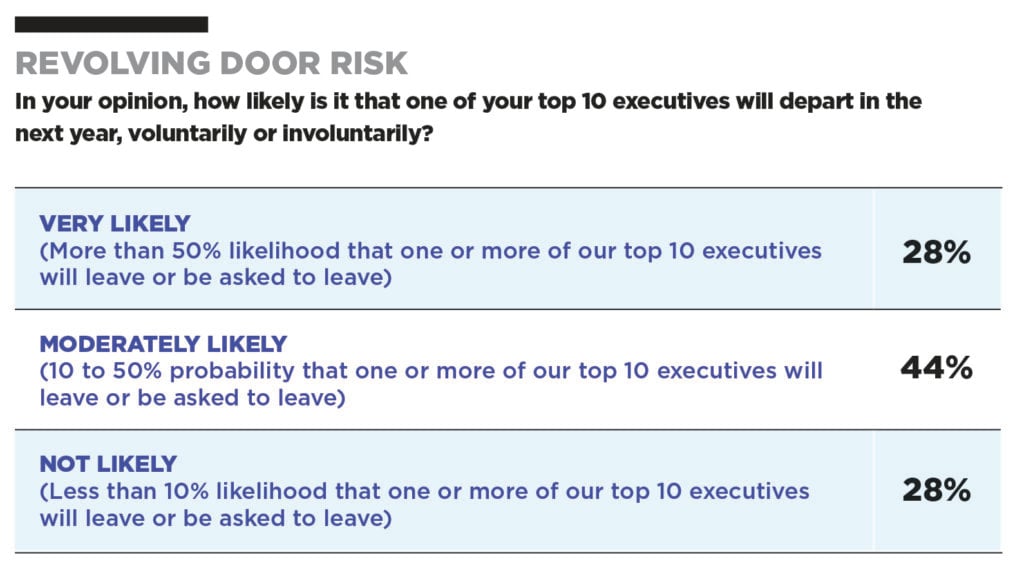 The risk that directors of newly public companies will be sued in securities class actions has never been higher. And the cost of Directors & Officers liability insurance for companies going public has skyrocketed right alongside. One of the principal drivers of this trend is a 2018 decision by United States Supreme Court which opened the floodgates of IPO-related securities lawsuits against companies and their officers and directors in state court, which plaintiffs’ lawyers view as much more plaintiff friendly than federal court.
The risk that directors of newly public companies will be sued in securities class actions has never been higher. And the cost of Directors & Officers liability insurance for companies going public has skyrocketed right alongside. One of the principal drivers of this trend is a 2018 decision by United States Supreme Court which opened the floodgates of IPO-related securities lawsuits against companies and their officers and directors in state court, which plaintiffs’ lawyers view as much more plaintiff friendly than federal court.
The Supreme Court’s decision in Cyan, ruling that state courts have jurisdiction over claims relating to public offerings under the federal Securities Act of 1933 has dramatically (and negatively) altered the landscape for companies going public today. Although Congress could easily fix the problem by amending the ’33 Act to provide for exclusive federal court jurisdiction, the likelihood that it will do so is remote, given its current state of division and distraction. Thus, it may well be up to participants in the capital markets—pre-IPO companies, their boards and their underwriters—to take matters into their own hands. Two possible strategies—direct listings and carve-outs to IPO lock-up agreements—would go a long way to stem the tide of IPO-related securities litigation, both in state and federal courts.
In March 2018, the U.S. Supreme Court issued its decision in Cyan, ruling that state courts retain concurrent jurisdiction over claims under Section 11 of the Securities Act of 1933 for misstatements and omissions in registration statements for securities offerings. At the time, few such state court filings were attempted, perhaps because it was generally assumed, in jurisdictions other than in California, that the 1998 Securities Litigation Uniform Standards Act (“SLUSA”) had all but shut the door to state court litigation of federal securities claims. The Supreme Court’s ruling in Cyan that SLUSA did not divest state courts of jurisdiction over offering claims means that plaintiffs can choose whether to file such lawsuits in either state or federal court. It also means that different plaintiffs can file in both state and federal court for the same alleged underlying violation.
State courts are increasingly favored by the plaintiffs’ bar. In state court, plaintiffs can evade the heightened scrutiny and protective procedures required by the Private Securities Litigation Reform Act (“PSLRA”), which Congress enacted in 1995 to stem the tide of frivolous securities class action lawsuits. Among other things, many state courts handling IPO-related cases allow plaintiffs to impose burdensome and expensive discovery before their allegations are tested. Such early discovery together with state courts’ liberal pleading standards allow plaintiffs to achieve a much higher rate of success in surviving threshold motions to dismiss and to extract significant settlements in cases that would much more likely have been dismissed in federal fora. As a result, 2019 witnessed the highest-ever number of state court ’33 Act securities class action filings, almost all challenging new public offerings.
Since Cyan through the first half of 2018, 80% of the claims filed under the ’33 Act were either filed exclusively in state court or in both state and federal court. Historically, fewer than 10% of ’33 Act claims were filed in state court. Since, as noted, state courts apply more lenient pleading standards and dismiss Section 11 cases much less frequently than do federal courts, one has to wonder whether plaintiffs are filing cases of questionable merit in state court, where they hope to get early discovery to flesh out a claim that would be tested on the pleadings and might fail in federal court.
By opening the floodgates to state court, the Cyan decision has also resulted in parallel, duplicative litigation in state and federal courts. In 2019, the first full year after Cyan was decided, almost half of all of Section 11 cases were filed by different plaintiffs jockeying for position in both federal and state courts—meaning almost half of the newly-public companies that were sued were forced simultaneously to defend nearly-identical lawsuits in multiple fora. This multi-front warfare makes litigation under Section 11 considerably more complicated and expensive for defendants. It also adds considerable complexity and added expense to settlement, both because a settlement with plaintiffs in one forum runs the risk of a challenge by the separate set of plaintiffs in the second forum, and because state cases may have to be settled even if the parallel federal case is dismissed.
Adding insult to injury, the mess that Cyan has wrought has drastically impacted D&O insurance for companies going public today. While premiums and self-insured retentions have been increasing across the board since mid-2018, and the cost of coverage for newly-public companies is always higher, the increases seen in 2019 for companies that are about to go public are truly dramatic. In 2019, rate increases over those charged comparable companies in the past have more than doubled for companies going public while rates for seasoned issuers have increased much more modestly. Some major insurers have virtually dropped out of the IPO market altogether. Industry experts expect this trend to continue and do not see any immediate end in sight.
Congress could easily fix the Cyan problem by amending the ’33 Act to eliminate concurrent state court jurisdiction for claims relating to public offerings particularly since the provision of concurrent jurisdiction is a relic without reason or rationale. In fact, the Supreme Court in Cyan alluded to this possible legislative “fix.” Unfortunately, the likelihood of Congressional action to solve the problem appears remote given the divided Congress and its very different agenda.
Another potential solution that has been tried, and thus far not succeeded, is the adoption of corporate charter provisions mandating that’33 Act offering claims be brought in federal court. On January 8, 2020, the Delaware Supreme Court held oral argument in the appeal of the Delaware Chancery Court decision rejecting this approach. The Chancery Court determined that federal forum selection charter provisions for claims under the ‘33 Act were not permitted because they did not seek to regulate disputes arising under Delaware law or related to the corporation’s internal affairs. Hopefully the Delaware Supreme Court will decide otherwise and reverse. If it does not, it is reasonable to assume that plaintiffs’ preference for state court will drive even greater percentages of ’33 Act offering claims to be filed in state court.
If neither Congress nor the Delaware Supreme Court fixes the Cyan problem, that means the market—and its participants— will have to resort to self-help. Two possible strategies, each of which derive from the fact that only shareholders who can prove that the stock they purchased was actually issued in the offering can bring a ’33 Act claim, can be deployed: direct listings and carve-outs to customary IPO lock-up agreements (“carve-outs”). Each of these approaches could eliminate ’33 Act liability for a company going public—both in federal and state court.
A bit of explanation of the mechanics of the law is in order. Section 11 of the ’33 Act provides a private remedy—against the issuer, its directors and officers and underwriters—for a false or misleading registration statement. In contrast to fraud claims under the federal securities laws, Section 11 claims impose liability for innocent or merely negligent misstatements. Once a misstatement is found, individual defendants bear the burden of proving their good faith—a factual inquiry rarely resolved at the pleading stage—in order to avoid liability. The combination makes directors uniquely vulnerable to Section 11 claims. However, while the liability standards are low, the standing requirements are limited: only those who purchased stock issued pursuant to the particular registration statement being challenged as false or misleading can assert a claim. Thus, to have standing to sue under the ’33 Act, a plaintiff must have purchased in the IPO itself or be able to trace the shares she bought back to the challenged registration statement.
In a traditional IPO, the registration statement covers shares to be sold by the company and possibly certain existing shareholders. The underwriters typically require lock-up agreements, which restrict additional sales of shares outside the IPO for a period of time—typically 180 days. The lock-up agreements are designed to manage post-offering supply and resulting volatility. Thus, only registered shares are in the market and those who purchase stock during the first 180 days can easily trace their shares back to the registration statement and thus have standing to sue under Section 11.
Direct listings, as an alternative to traditional IPOs, have received significant attention with the recent listings of Spotify and Slack. In a direct listing, no shares are sold by the company and therefore no capital is raised. Rather, a company files a registration statement solely to provide certain of its existing shareholders, such as early stage investors and employees, the ability to resell their shares directly to the public. The existing shareholders include both those whose shares are registered pursuant to the company’s registration statement and those whose shares are exempt from the registration requirements of the securities laws. The shareholders have complete discretion about whether to sell their shares and all are equally able to sell shares upon the company’s direct listing—i.e., starting from the moment of the opening bell. There are no initial allocations: any prospective purchaser can place orders with their broker of choice. Because both registered and unregistered shares are available for sale upon the company’s direct listing and the sales are conducted through anonymizing brokerage transactions, it is not possible for any purchaser to trace the particular shares she bought back to the registration statement covering the direct listing. Accordingly, no purchasers have standing to assert an offering claim under the ’33 Act.
In general, a direct listing is not a viable or attractive option other than for cash-rich and well-branded unicorns, which are few and far between. For the majority of companies, however, who need to raise needed capital and who may not have a widely-recognized brand name, there is another approach. Pre-public companies should lobby IPO underwriters to make modest changes to the industry-standard lock-up agreements that enable after-market purchasers to “trace” their shares directly to the offering thus giving them standing to assert a claim under the ’33 Act. If underwriters were to agree to a carve-out to the lock-up agreement, allowing some exempt-from-registration shares to be sold into the market simultaneously with the IPO, tracing would be impossible. While such carve-outs are not as airtight as direct listings in immunizing an IPO from claims under Section 11 of the ’33 Act, they would go a long way in reducing both the likelihood as well as the severity of such claims.
While the exact contours of a carve-out would have to be negotiated on an IPO-by-IPO basis, a carve-out that allowed shares that are exempt from the registration requirements of the securities laws to be sold into the market as soon as public trading began would defeat a claim under the ’33 Act except for those who actually purchased their shares in the IPO directly from a member of the underwriting syndicate. It does not take many non-IPO shares to render tracing impossible. Theoretically, one non-IPO share is enough. One Circuit Court has held that non-IPO shares comprising as little as .15% of the total shares in the market was enough to make tracing impossible. While there might be good reasons for locking-up insiders and affiliates, perhaps the carve out from the lock-up could permit employees to sell a small percentage of their performance-based illiquid holdings.
The impact of carve-outs on IPO claims under the ’33 Act would be quite significant. Generally, the overwhelming majority of investors who receive the initial allocation of shares from underwriters in an IPO are institutional investors who frequently flip IPO shares (or at least sell them in relatively short order) significantly reducing the likelihood that they would still be holding their initial shares when and if the stock price falls below the IPO price. Moreover, these early institutional investors are generally more reluctant than later after-market purchasers to act as lead plaintiff and initiate all but the most meritorious of securities class actions. All of these factors combined should translate to a significantly reduced likelihood that a securities class action will be filed in the first place and if one is filed, to significantly reduced damages due to the dramatically reduced potential class. This should also result in issuers with such carve-outs being able to negotiate more reasonable D&O insurance rates reflecting the reduced risk of any offering claim.
Underwriters may have little impetus or appetite for changing traditional lock-ups because they face little risk as things are. Although underwriters also face the threat of state court ’33 Act claims for liability in connection with IPOs, as well as duplicative litigation of ’33 Act claims in state and federal court, their indemnification agreements with issuers make them generally secure. However, given the clear benefits of the carve-outs to issuers and their directors and officers, and the fact that a relatively small number of unregistered shares in the market can eliminate tracing, companies should encourage their underwriters to agree to incorporate carve-outs in lock-up agreements. It seems at least some enlightened underwriters might be willing to slightly break the mold in order to greatly diminish their clients’ potential liability.





